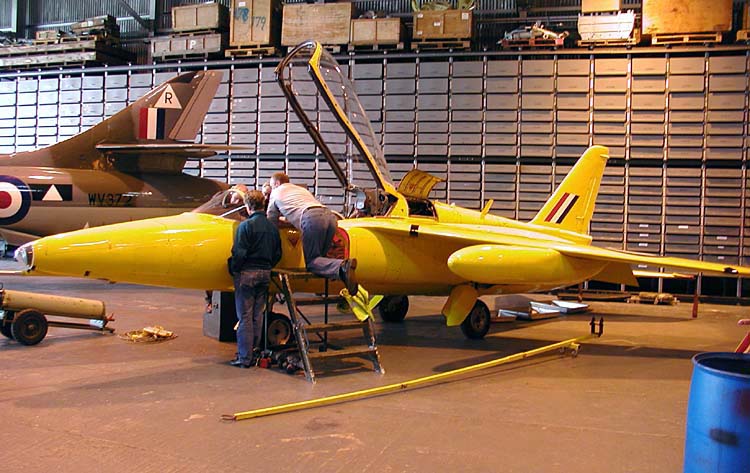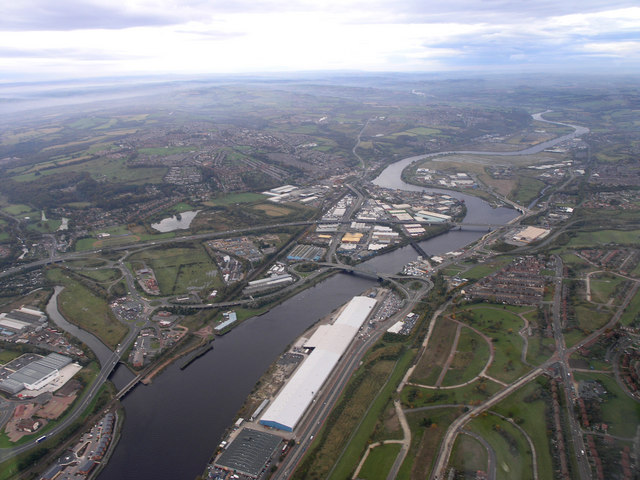|
McDonnell Douglas F-4 Phantom II In UK Service
The McDonnell Douglas F-4 Phantom II was one of the principal combat aircraft of the United Kingdom (UK) from 1968 to 1992. The UK was the first export customer for the US-built F-4 Phantom, which was ordered amid political and economic difficulties that afflicted British designs for similar aircraft. The Phantom was procured to fill several roles with the Royal Navy's Fleet Air Arm and the Royal Air Force (RAF), including air defence, close air support, low-level attack and tactical reconnaissance. Most Phantoms operated by the UK were built as a special batch containing British technology, an effort to support the British aerospace industry after major project cancellations. Two variants were initially built for the UK: the F-4K variant, designed from the outset as an air-defence interceptor to be operated by the Fleet Air Arm from the Royal Navy's aircraft carriers; and the F-4M version, operated by the RAF in tactical strike and reconnaissance roles. In the mid-1980s, a ... [...More Info...] [...Related Items...] OR: [Wikipedia] [Google] [Baidu] |
Second-generation Jet Fighter
Second generation or variants may refer to: * Second generation immigrant ** Nisei, one of the second generation of people of Japanese descent in the Americas * Second generation of Chinese leaders, see Generations of Chinese leadership * Second-generation human rights, see Three generations of human rights * People whose parents took part in a Blessing ceremony of the Unification Church Arts and entertainment * Second Generation (novel), ''Second Generation'' (novel), 1964 novel, by Raymond Williams * ''Second Generation'', 1978 novel by Howard Fast * ''The Second Generation'', 1994 collection of five fantasy novellas by Margaret Weis and Tracy Hickman * Second Generation (film), ''Second Generation'' (film), 2003 British television drama * Second Generation (advertisement), ''Second Generation'' (advertisement), 2006 television ad for Nike * ''Second Generation of Postwar Writers'' in Japanese literature * Transformers: Generation 2, toy line which ran from 1992–1995 * In Po ... [...More Info...] [...Related Items...] OR: [Wikipedia] [Google] [Baidu] |
Folland Aircraft
Folland Aircraft was a British aircraft manufacturing company which was active between 1937 and 1963. History British Marine Aircraft Limited was formed in February 1936 to produce Sikorsky S-42-A flying boats under licence in the UK. The company built a factory on the western side of the Hamble peninsula with a slipway to Southampton Water. The construction of one Sikorsky based aircraft was started at Hamble, however the company ran out of money and liquidators were appointed. Mergers with other British aircraft companies were considered, including one with Westland Aircraft, but none was followed up.Fagan, Dave. 'Hamble' ''Aviation in Hampshire UK 1900 to 2000'' Retrieved 20 May 2005 In 1937 [...More Info...] [...Related Items...] OR: [Wikipedia] [Google] [Baidu] |
Armstrong Whitworth
Sir W G Armstrong Whitworth & Co Ltd was a major British manufacturing company of the early years of the 20th century. With headquarters in Elswick, Tyne and Wear, Elswick, Newcastle upon Tyne, Armstrong Whitworth built armaments, ships, locomotives, automobiles and aircraft. The company was founded by William Armstrong, 1st Baron Armstrong, William Armstrong in 1847, becoming Armstrong Mitchell and then Armstrong Whitworth through mergers. In 1927, it merged with Vickers Limited to form Vickers-Armstrongs, with its automobile and aircraft interests purchased by John Siddeley, 1st Baron Kenilworth, J D Siddeley. History In 1847, the engineer William George Armstrong founded the Elswick, Tyne and Wear, Elswick works at Newcastle, to produce hydraulic machinery, cranes and bridges, soon to be followed by artillery, notably the Armstrong breech-loading gun, with which the British Army was re-equipped after the Crimean War. In 1882, it merged with the shipbuilding firm of Charles Mi ... [...More Info...] [...Related Items...] OR: [Wikipedia] [Google] [Baidu] |
Gloster Aircraft Company
The Gloster Aircraft Company was a British aircraft manufacturer from 1917 to 1963. Founded as the Gloucestershire Aircraft Company Limited during the First World War, with the aircraft construction activities of H.H. Martyn & Co. of Cheltenham, England it produced fighters during the war. It was renamed later as foreigners found 'Gloucestershire' difficult to pronounce. It later became part of the Hawker Siddeley group and the Gloster name disappeared in 1963. Gloster designed and built several fighters that equipped the British Royal Air Force (RAF) during the interwar years including the Gladiator, the RAF's last biplane fighter. The company built most of the wartime production of Hawker Hurricanes and Hawker Typhoons for their parent company Hawker Siddeley while its design office was working on the first British jet aircraft, the E.28/39 experimental aircraft. This was followed by the Meteor, the RAF's first jet-powered fighter and the only Allied jet fighter to be put ... [...More Info...] [...Related Items...] OR: [Wikipedia] [Google] [Baidu] |
Avro
Avro (an initialism of the founder's name) was a British aircraft manufacturer. Its designs include the Avro 504, used as a trainer in the First World War, the Avro Lancaster, one of the pre-eminent bombers of the Second World War, and the delta wing Avro Vulcan, a stalwart of the Cold War. Avro was founded in 1910 by Alliott Verdon Roe at the Brownsfield Mill on Great Ancoats Street in Manchester. The company remained based primarily in Lancashire throughout its 53 years of existence, with key development and manufacturing sites in Alexandra Park, Chadderton, Trafford Park, and Woodford, Greater Manchester. The company was merged into Hawker Siddeley Aviation in 1963, although the Avro name has been used for some aircraft since then. History Early history One of the world's first aircraft builders, A.V. Roe and Company was established on 1 January 1910 at Brownsfield Mill, Great Ancoats Street, Manchester, by Alliott Verdon Roe and his brother Humphrey Verdon Roe ... [...More Info...] [...Related Items...] OR: [Wikipedia] [Google] [Baidu] |
Hawker Aircraft
Hawker Aircraft Limited was a British aircraft manufacturer that was responsible for some of the most famous products in British aviation history. History Hawker had its roots in the aftermath of the First World War, which resulted in the bankruptcy of the Sopwith Aviation Company. Sopwith test pilot Harry Hawker and three others, including Thomas Sopwith, bought the assets of Sopwith and formed H. G. Hawker Engineering in 1920. In 1933, the company was renamed Hawker Aircraft Limited, and it took advantage of the Great Depression and a strong financial position to purchase the Gloster Aircraft Company in 1934. The next year, it merged with the engine and automotive company Armstrong Siddeley and its subsidiary, Armstrong Whitworth Aircraft, to form Hawker Siddeley Aircraft. This group also encompassed A. V. Roe and Company (Avro). The company continued to produce designs under the "Hawker" name as part of Hawker Siddeley Aircraft, which from 1955 was a division of Hawk ... [...More Info...] [...Related Items...] OR: [Wikipedia] [Google] [Baidu] |
Hawker Siddeley
Hawker Siddeley was a group of British manufacturing companies engaged in list of aircraft manufacturers, aircraft production. Hawker Siddeley combined the legacies of several British aircraft manufacturers, emerging through a series of mergers and acquisitions as one of only two such major British companies in the 1960s. In 1977, Hawker Siddeley became a founding component of the nationalised British Aerospace (BAe). Hawker Siddeley also operated in other industrial markets, such as locomotive building (through its ownership of Brush Traction) and diesel engine manufacture (through its ownership of Lister Petter). The company was once a constituent of the FTSE 100 Index. History Origins Hawker Siddeley Aircraft was formed in 1935 as a result of the purchase by Hawker Aircraft of the companies of John Siddeley, 1st Baron Kenilworth, J. D. Siddeley, the automotive and engine builder Armstrong Siddeley and the aircraft manufacturer Armstrong Whitworth Aircraft. [...More Info...] [...Related Items...] OR: [Wikipedia] [Google] [Baidu] |
Hunting Aircraft
Hunting Aircraft was a British aircraft manufacturer that produced light training aircraft and the initial design that would evolve into the BAC 1-11 jet airliner. Founded as Percival Aircraft Company in 1933, the company later moved to Luton, England. It was eventually taken over by the British Aircraft Corporation (BAC) in 1960. History The company was formed as Percival Aircraft Co. in Gravesend in 1933 by Edgar Percival with Lt. Cdr E.B.W. Leak to produce his own designs. The first aircraft was the Percival Gull - the prototype was built for Percival by the British Aircraft Company and production aircraft by Parnall Aircraft. The company moved to Gravesend Airport in Kent, where it could build the Gull itself.Grey 1972, pp. 64c–65c. Restructured in 1936, it became Percival Aircraft Ltd, and moved to Luton Airport. The company became part of the Hunting Group in 1944. Percival, who had resigned from the board to serve in the Royal Air Force Volunteer Reserve du ... [...More Info...] [...Related Items...] OR: [Wikipedia] [Google] [Baidu] |
Bristol Aeroplane Company
The Bristol Aeroplane Company, originally the British and Colonial Aeroplane Company, was both one of the first and one of the most important British aviation companies, designing and manufacturing both airframes and aircraft engines. Notable aircraft produced by the company include the 'Boxkite', the Bristol Fighter, the Bulldog, the Blenheim, the Beaufighter, and the Britannia, and much of the preliminary work which led to Concorde was carried out by the company. In 1956 its major operations were split into Bristol Aircraft and Bristol Aero Engines. In 1959, Bristol Aircraft merged with several major British aircraft companies to form the British Aircraft Corporation (BAC) and Bristol Aero Engines merged with Armstrong Siddeley to form Bristol Siddeley. BAC went on to become a founding component of the nationalised British Aerospace, now BAE Systems. Bristol Siddeley was purchased by Rolls-Royce in 1966, who continued to develop and market Bristol-designed engines. ... [...More Info...] [...Related Items...] OR: [Wikipedia] [Google] [Baidu] |
Vickers-Armstrongs
Vickers-Armstrongs Limited was a British engineering conglomerate formed by the merger of the assets of Vickers Limited and Sir W G Armstrong Whitworth & Company in 1927. The majority of the company was nationalised in the 1960s and 1970s, with the remainder being divested as Vickers plc in 1977. It featured among Britain's most prominent armaments firms. History Vickers merged with the Tyneside-based engineering company Armstrong Whitworth, founded by William Armstrong, to become Vickers-Armstrongs. Armstrong Whitworth and Vickers had developed along similar lines, expanding into various military sectors and produced a whole suite of military products. Armstrong Whitworth were notable for their artillery manufacture at Elswick and shipbuilding at a yard at High Walker on the River Tyne. 1929 saw the merger of the acquired railway business with those of Cammell Laird to form Metropolitan Cammell Carriage and Wagon (MCCW); Metro Cammell. In 1935, before rearmament ... [...More Info...] [...Related Items...] OR: [Wikipedia] [Google] [Baidu] |
English Electric
The English Electric Company Limited (EE) was a British industrial manufacturer formed after World War I by amalgamating five businesses which, during the war, made munitions, armaments and aeroplanes. It initially specialised in industrial electric motors and transformers, locomotives and railway electric traction, traction equipment, diesel engine, diesel motors and steam turbines. Its products were later expanded to include consumer electronics, nuclear reactors, guided missiles, military aircraft and mainframe computers. Two English Electric aircraft designs became landmarks in British aeronautical engineering; the English Electric Canberra, Canberra and the English Electric Lightning, Lightning. In 1960, English Electric Aircraft (40%) merged with Vickers Armstrongs, Vickers (40%) and Bristol Aeroplane Company, Bristol (20%) to form British Aircraft Corporation. In 1968 English Electric's operations were merged with General Electric Company#Further expansion (1961–83), ... [...More Info...] [...Related Items...] OR: [Wikipedia] [Google] [Baidu] |









